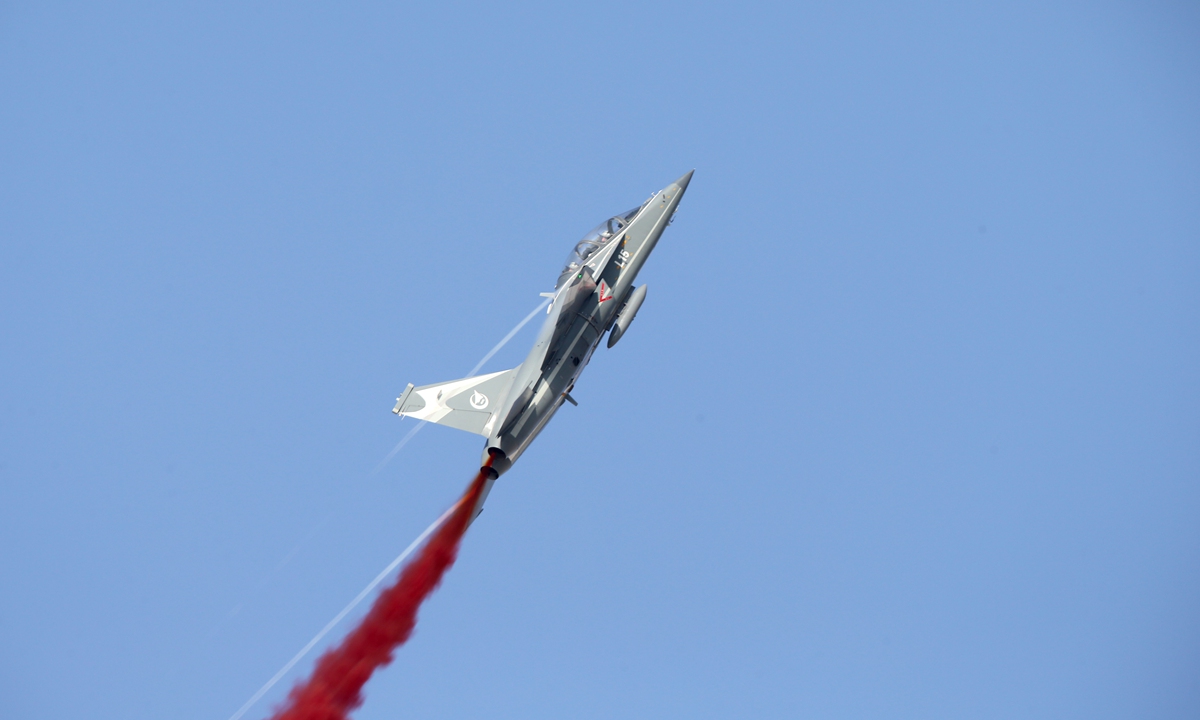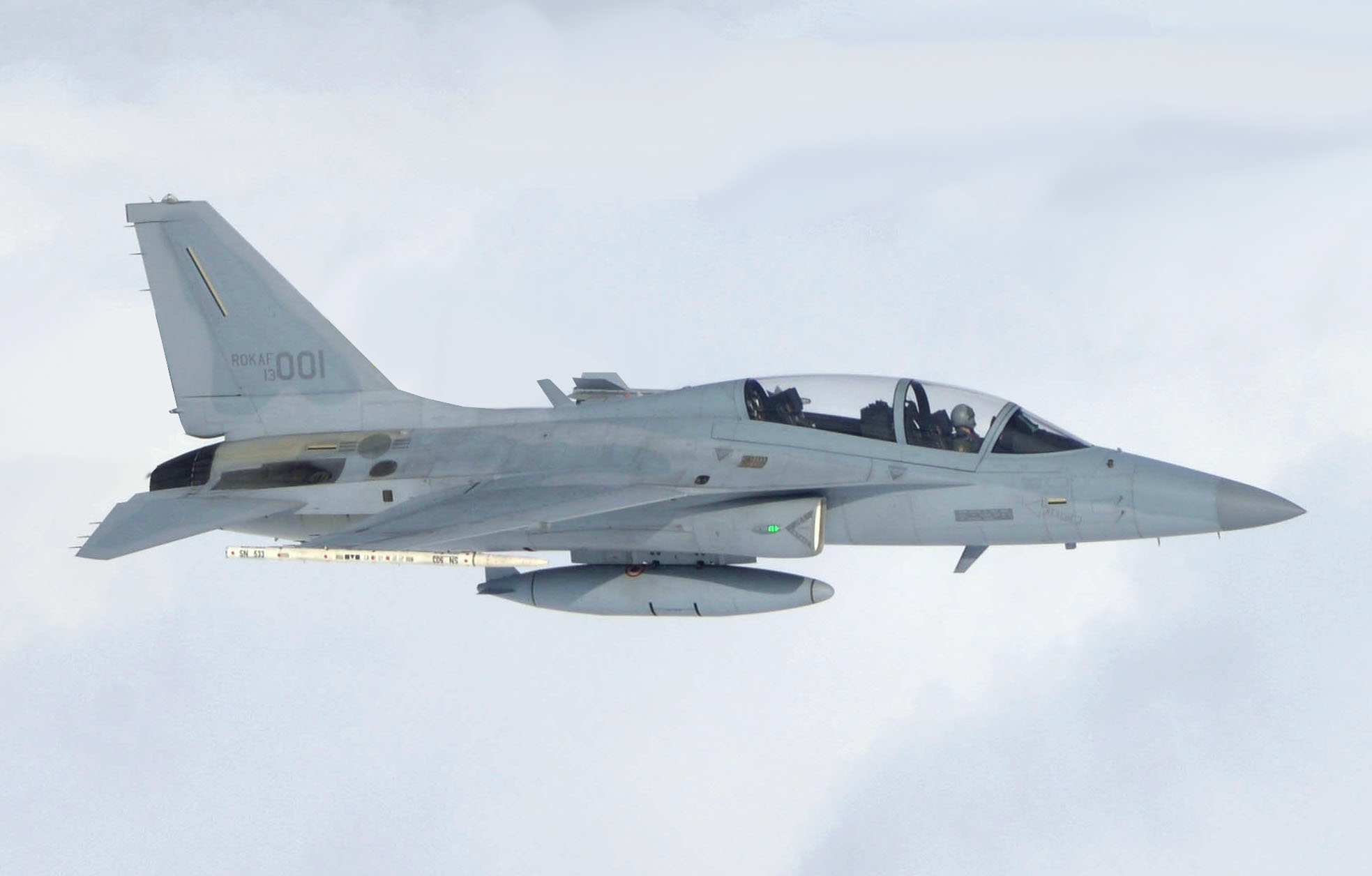The Chinese military has amazed the world with its complex drills on JL-10 aircraft held recently. The advanced trainer jet, also known as the L-15, in its export version, dropped a 500-kilogram bomb for the first time in a training exercise recently, The Global Times reported.
The aircraft gave a glimpse into the PLA Air Force’s training plan for cadets to master ground attack and bombing early in their training program. Analysts said the training also displays the aircraft’s outstanding capabilities.
According to China Central Television (CCTV), a brigade from the PLA Air Force’s Shijiazhuang Flight Academy picked a group of the best flight instructors and conducted a live-fire training exercise with two 500-kilogram aviation bombs on the JL-10 trainer aircraft in early spring.
These training drills come just over a month after the United Arab Emirates (UAE) announced its plans to buy the export version of this aircraft, the L-15 Advanced Trainer jet (ATJ).
Zambia is the only country to have purchased and trained on the L-15 trainer Lead-in Fighter Trainer (LIFT) Aircraft. Uruguay and Venezuela have also expressed interest.

In late February this year, it was learned that the UAE Defense Ministry will sign a contract with China National Aero-Technology Import & Export Corporation (CATIC) to purchase the L-15 training and light combat aircraft, with the option of purchasing another 36 planes later.
The #UAE Air Force has announced plans to purchase 12 CATIC Hongdu L-15 jet trainers from China with options for a further 36 aircraft. https://t.co/x0N5mQDSDi
— Tony Osborne (@Rotorfocus) February 23, 2022
In 2020, The PLAAF launched a new training program based on the third-generation JL-10 in an effort to minimize pilot cadets’ training time and increase their familiarity with the equipment in preparation for future warfare. Every single cadet had graduated from the academy that year, Asia Times had reported.
According to reports, the JL-10’s basic air combat capabilities and modest cost make it suitable for countries with low threat air defense environments, according to analysts.
Knocking Off Competitors
According to reports, this was the first time the JL-10 aircraft carried out such a training mission (dropping aviation bombs) since being commissioned into the PLA Air Force.
“We have never dropped a 500-kilogram bomb in previous training, so this is a first. I am very excited to complete this mission and we will practice whatever is required on the battlefield,” Li Liang, a flight instructor of the PLA Air Force brigade told CCTV.
This is indicative of China’s focus on combat capability and having a combat-ready force to take on the adversary in case of a conflict.

China is embroiled in disputes with almost all of its neighbors, sparing North Korea and Pakistan. The militarization and overcrowding of the Indo-Pacific region and the tensions prevailing between regional players and the West has necessitated force modernization, troop mobilization and military reforms.
The cadets will not have to learn everything from scratch when they graduate and join formal missions with real fighter jets, according to the expert, who noted that the exercise was made possible by the JL-10’s outstanding capabilities, which include the ability to simulate a multirole fighter jet with air-to-air and air-to-ground capabilities.
It has tandem seating for two persons, with the student pilot in the front and the teacher in the back. The JL-10’s advanced avionics also aid trainee pilots in their preparation for the complicated digital cockpits seen on newer Chinese fighters, particularly the J-20 and potentially on the futuristic FC-31.

It is pertinent to mention that China’s neighbor and bitter rival South Korea has also developed its own Advanced Jet Trainer known as the T-5O Golden Eagle that it has been marketing for export. The UAE has reportedly shown interest in the Korean jet a few weeks after announcing the purchase of the L-15.
Another of China’s rivals and adversaries across the border, India is also in the process of developing the Lead-in Fighter Trainer variant of its LCA Tejas aircraft.
The Russian Yak-130, Italian MB.346, China’s subsonic K-8, T-50 Golden Eagle, and maybe Boeing’s T-X are among the rivals in the trainer/light attack jet market.
It’s too soon to say if the L-15 will be a major export success, but sales of low-cost supersonic trainers/fighters could become a fascinating indicator of Beijing’s growing influence in Africa, Asia, and Latin America in the coming years.
China’s huge capital, economic influence and political outreach have been the cornerstone of its defense export policy. Further, it has been observed by various military analysts that the low cost of Chinese aircraft and its resemblance with fourth-generation aircraft makes it stand out as a preferred option for many states.
The capability of the L-15 to not just perform basic combat operations but also multiple missions and air attack is also the unique selling point of this Advanced Trainer jet against its competitors.
The JL-10/ L-15 Advanced Trainer Jet
The Hongdu L-15 is a two-seat, twin-engine supersonic platform built to address the demand for training pilots. This light-attack aircraft is comparable to the Leonardo M346 Master, with the exception that this Chinese jet has two afterburning engines. In case one engine fails, the second can support the aircraft.
China’s L-15 advanced jet trainer made its debut at the Dubai Airshow 2021 in November last year. This was viewed as a major move to promote its trainer jet to Middle Eastern countries that have been in the process of diversifying their military import options away from the west.
The L-15 is available in two versions: advanced jet training and lead-in fighter training. Advanced trainer jets teach student pilots how to fly supersonic aircraft and perform complex aerial maneuvers, whilst lead-in fighter training jets are improved versions of advanced jet models that emphasize familiarizing trainees with combat maneuvers and skills.
The aircraft is powered by two AI-222K-25F afterburner turbofan engines, each with a single afterburner thrust of 4200 kg, a full authority digital engine control module, and service life of 3000 flying hours. The L-15 trainer can also engage in ground and air warfare.
The L-15 training aircraft has six weapon attachment points and may be externally attached to air-to-air missiles, air-to-surface missiles, precision-guided bombs, general aviation bombs, and rocket launching nests. It has a payload of 3,000 kg. This is one key factor behind the jet’s export potential and the interest of foreign buyers.
The aircraft is outfitted with a comprehensive set of advanced electronic equipment and comes with a wide range of ammunition, so it can carry weapons and serve as a light, multi-role combat aircraft in addition to its training objectives, according to experts.
- Contact the author at sakshi.tiwari9555@gmail.com
- Follow EurAsian Times on Google News




